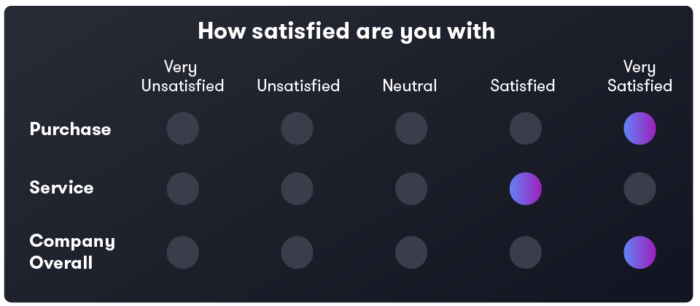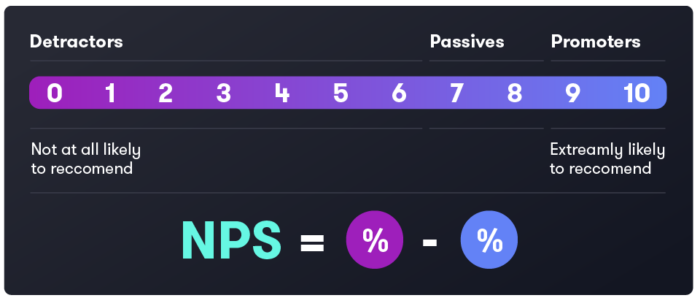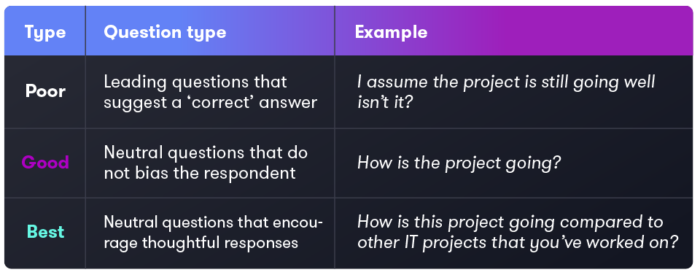BLOG
Mastering survey best practices: a guide to effective consumer experience research

Surveys are a powerful tool for gathering insights and understanding the customer experience both online and in-store. However, if they’re not delivered in a compelling way, they’re also easily ignored—deleted from shoppers’ inboxes or tossed in the trash when printed on a receipt.
If you want to reliably collect valuable feedback from customers, this guide will help you design effective surveys to achieve your research goals.
Get clear on what you need
Start by painting a clear picture of what you hope to achieve with the survey. Ask yourself:
- What questions do I want to answer?
- What insights am I hoping to gain?
- How will I use the data collected?
Defining clear goals ensures that every question in your survey serves a purpose, instead of asking for its own sake.
Keep it conversational
A survey shouldn’t feel like an interrogation—it should be a conversation. This makes the interaction more natural and free flowing for participants while yielding more complete and honest answers for the brand.
Don’t ramble on: The longer a sentence grows, the more difficult it is for the reader to follow. Make sure your sentences are clear, simple, and express complete thoughts that are easy to understand.
Avoid filler words: It may be tempting to get ultra-descriptive with your questions, but when it comes to surveys, you’re on borrowed time. Cutting out filler words (basically, just, etc.) makes sentences shorter and easier to understand, therefore decreasing respondent drop-off.
Think “short and sweet”
Keep your survey concise to maximize completion rates. We recommend including no more than 12 questions, as the average response time per question is about 10-30 seconds. Any longer and you’ll start losing people fast.

Quick tips for SMS surveys
- Brands pay twice as much to send an emoji compared to a regular text character.
- Questions should be 150 characters or less since virtual keyboards take up 50% of the screen on mobile; only the last 4 lines of text are seen.
Choose your question type wisely
The type of questions you ask will dictate the format and quality of answers you receive. These are the most common options.
- Multiple choice: Keeps answers simple and easy to analyze.
Pros: By providing mutually exclusive choices, these questions produce structured data that’s nice and clean—perfect for easy analysis.
Cons: This format forces you to limit responses to a predetermined list of options (though this can be solved by adding an “in your own words…” section).
- Freeform: Allows respondents to express their thoughts in their own words.
Pros: Allowing respondents to freely provide feedback can uncover insights you might not have anticipated or touch on topics you may have overlooked.
Cons: In the absence of specific options, some respondents may not provide clear or relevant input.
- Likert Scales (CSAT / OSAT): Likert Scales present a range of options, typically on a 5 or 7-point scale, from one extreme attitude to another (i.e. strongly disagree to strongly agree).
Pros: Questions are easy to understand, and answers are easily quantifiable when analyzing data.
Cons: People may avoid choosing the “extreme” options on the scale, even if it would be the most accurate.

- Net Promoter Score (NPS): NPS is designed to answer one important question: how likely is a customer to recommend your business to someone else?

Choose your order wisely
The order in which questions are presented in a survey can affect how people respond. For example, if a respondent provides a high score near the beginning (e.g. NPS = 10), it may cause them to agree to another item to appear consistent, even if they don’t necessarily feel that way.
So, we ran a few tests to determine the best time to ask about NPS. We found that placing this question towards the end increased completion rates, and that a best practice is to avoid starting with sensitive demographic questions (they tend to act as deterrents).
Common pitfalls to avoid
- Leading questions: Your phrasing should be neutral and unbiased in order to extract genuine feedback.

- Double-barreled questions: Avoid asking two questions in one, which can confuse respondents.

- Memory-based errors: Keep reference periods short to improve accuracy. Human memory is notoriously unreliable, especially when it comes to details. Keep the reference period close to the time of the interaction: we are likely to give more accurate responses about events that happened in the last 7 days than in the past 12 months. You can also anchor the time frame with other meaningful touch points, dates, or events (e.g., what were your actions before or after COVID-19?).
By following these best practices, you can create surveys that gather valuable data and will help you improve your customer experience. Want to unlock the full potential of your consumer insights through expertly crafted surveys? We can help.